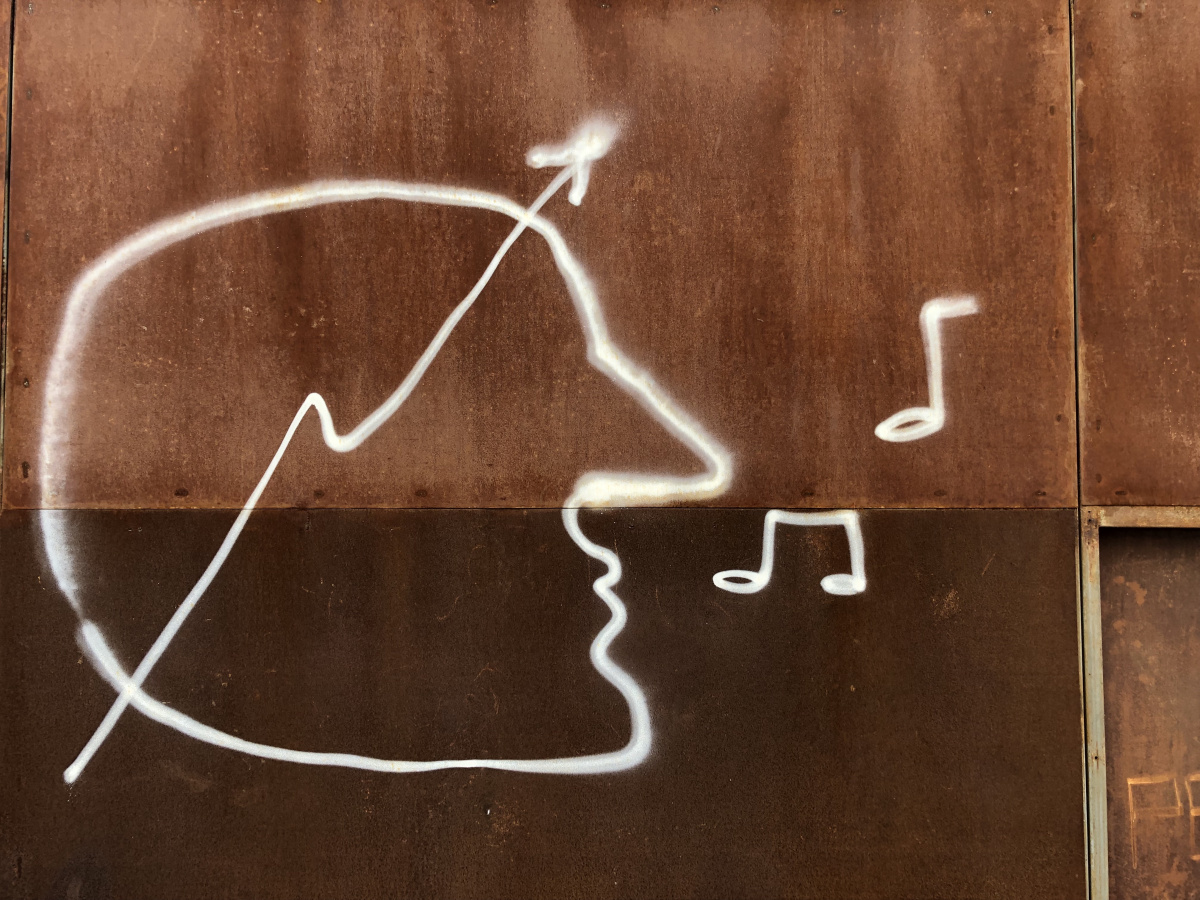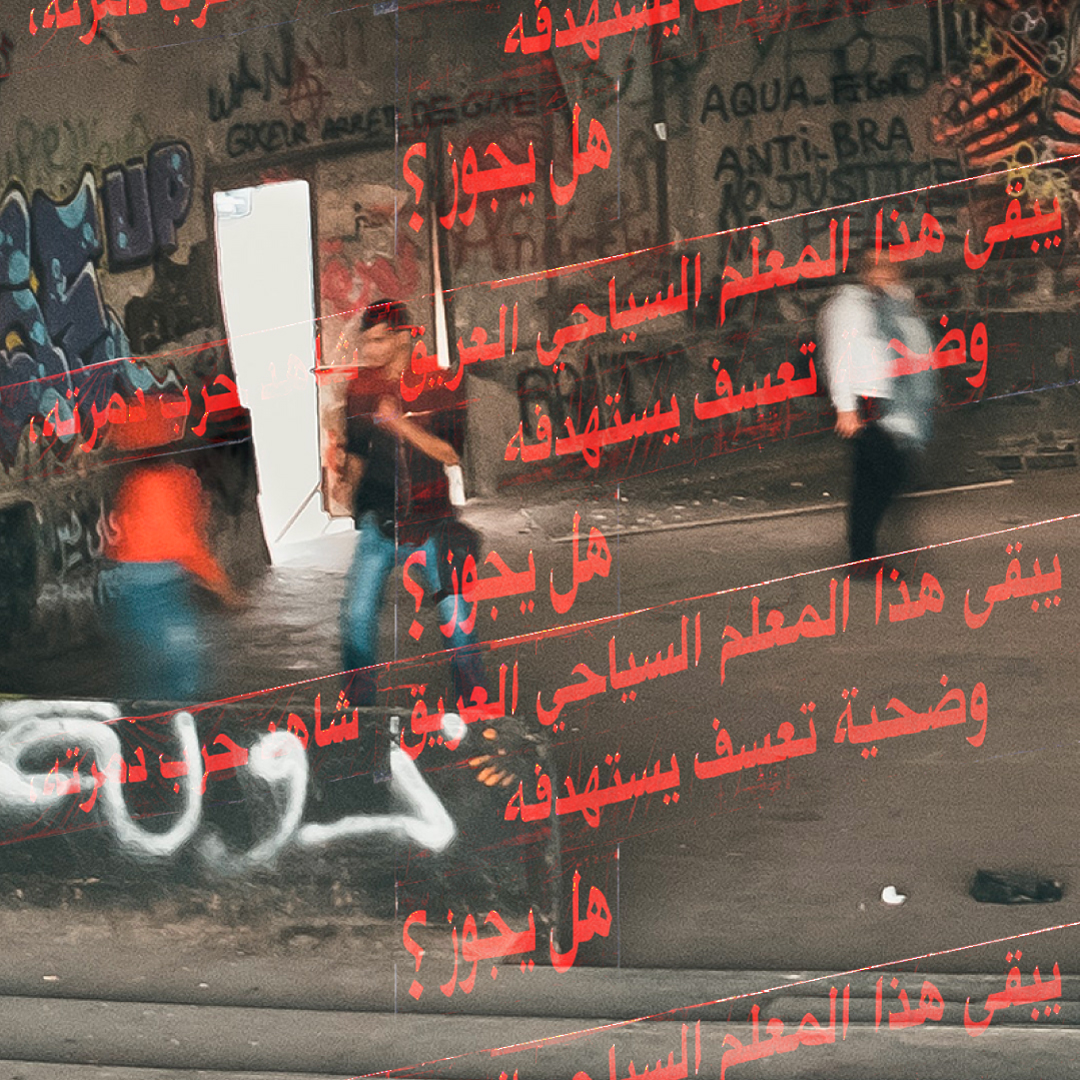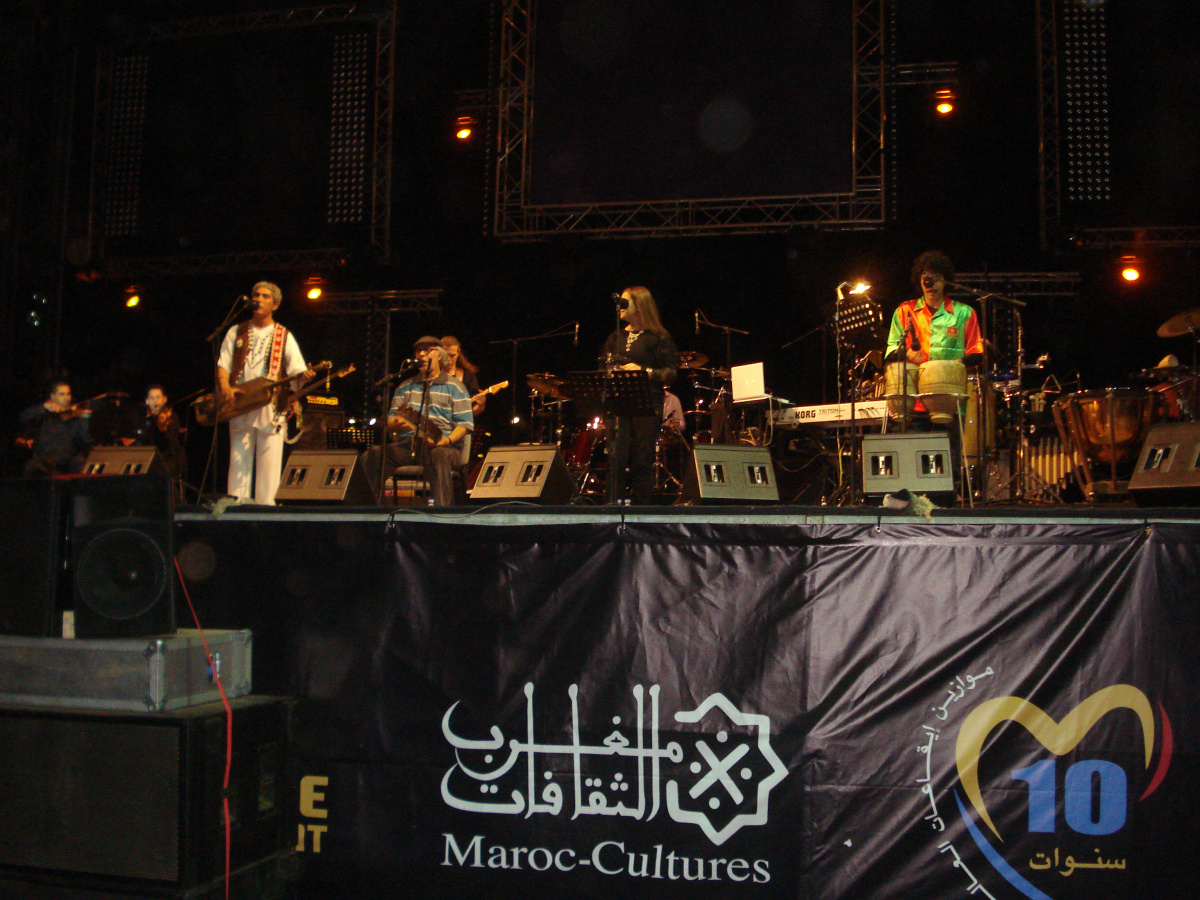
No End and No Beginning
Work on the Online Special Norient City Sounds: Beirut began during a period of extreme and volatile economic conditions in Beirut and Lebanon. The featured artists, musicians, filmmakers, designers, and writers have presented works that address this context and importantly, how sound and music intersect with their respective practices. An introductory text that asks what are the sounds of the aftermath of a collapse?
In the span of almost three years, the city of Beirut has undergone deep and devastating transformations. The October 17 protests that erupted in 2019 marked a turning point in its political history and were halted by the global outbreak of COVID-19. During the protests, Lebanon sank into an unprecedented economic and financial crisis that continues to worsen every day, leaving more than half of its population living below the poverty line.1 A year later, on August 4, 2020, the Beirut port explosion destroyed half of the city, killing hundreds and injuring and forcing hundreds of thousands out of their homes. The cataclysmic proportion of the blast remains palpable today as people continue to mourn and address the relentless traumas to which they have been subjected. Two years later, no politician has been held accountable or brought to justice.
Lingering with Ghosts
The transformations the city is witnessing have been strikingly visible and audible; they signaled a time in which decay (in its political and infrastructural senses) was simultaneously vertiginously rapid and cruelly drawn-out. In the course of three years, there were endings and beginnings, and yet, there were also none. In their candid and poignant diaristic essay, writer and curator Edwin Nasr explains that the October 17 uprising «felt like a beginning – the outset of a project of tearing apart, or unlearning, thirty years of public dissimulation by the rotten corpse of the government» (Nasr 2021).
This beginning wished but failed to foment a collective radical political imagination, which was, in part, stunted by the advent of the pandemic. Writing a few months after Nasr, in a new year’s omen, Sintia Issa, writer and art historian, insists on the potential fecundity of the aftermath and renews a call for resisting power that «governs us through power, through water, waste, internet access, movement – indeed, through every imaginable infrastructure conceived to fail and make room for its replacement, equally designed to fail» (Issa 2022). On the subject of beginnings and endings and what it means to live in a «post-»era in Lebanon today, she argues that:
Ends and beginnings have been blown to smithereens, and all we have, it seems, is time tending toward the abyss, and the abyss is endless. Recent events and crises have dramatically altered ways of relating to this place and time. Ours is a place-time of impossible dreaming, a nightmarish place-time with an evolving cast of monsters and demons. (Sintia Issa)
What we are left with is a city we barely recognize, but also one that is rife with ghosts whose power we must harness going forward.
If the pandemic allowed for already existing sonic phenomena – produced by the natural environment (or what is left of it), as well as military and religious apparatuses – to resound more pronouncedly, the sounds of the aftermath, of this haunted «post-» are amplifications of the state of complete infrastructural and administrative decay. This is the sound of the cartels, to take up Issa’s term. So what are the sounds of this epoch and who endures them the most? How are musicians and composers thinking about or working through these new aural realities?
At the Edge, a Voice
The contributions in this edition, which includes short and long-form essays, videos, mixtapes, a photographic series, and sound pieces are records of this time. They sound out rather than tell. It is perhaps not a coincidence that there are very few speaking voices heard in the entire edition. When they do appear, they are always at the edge of a video such as Nour Ouyada’s «Not All Things that Shine Are Beautiful» or Ziad Nawfal’s «Melody for a Fallen City», or they are muffled by machines in Ziad Moukarzel and Jad Atoui’s sound pieces.
This edition is oriented towards practitioners, from filmmakers and video artists, to sound artists and composers, DJs, and artists who register haunting sonic events (big and small) that continue to resonate. They lay bare formative experiences with sound and music such as in Rami Sabbagh’s «A Taste of Metal in My Mouth», as well as the continuous state of loss of their city through distinct concepts and experiences of aurality; rather than represent such a reality, these practitioners attempt to understand it by building, mourning, and tuning into the sonic spaces and environments that now envelop a new city scarred by the profound and uncertain transformations it is experiencing.
In this sense, this Online Special does not purport to chart existing scenes nor does it seek to present a «portrait of the city» through sound. Rather it attempts to think about the place of sound and voice through concepts of community, personal and collective histories, sound-making and composition, power relations and gender, and the formation or lack of collective political imagination. It seeks the paths that artists have drawn with sounds and musics in the city itself.
- 1. For a more comprehensive understanding of the financial and economic collapse in Lebanon and its consequences, see Stefan Tarnowski’s diary entry «In Lebanon» (Tarnowski 2021).
List of References
This introduction is part of the virtual exhibition «Norient City Sounds: Beirut» curated and edited by Rayya Badran.
Biography
Links
Shop


Published on August 26, 2022
Last updated on December 18, 2023
Topics
Why do people in Karachi yell rather than talk and how does the sound of Dakar or Luanda affect music production?
How do acoustic environments affect human life? In which way can a city entail sounds of repression?
About Tunisian rappers risking their life to criticize politics and musicians affirming 21st century misery in order to push it into its dissolution.
Specials
Snap

